My knowledge of Italian machine guns is rather lacking, so I was pretty excited when I received a copy of a FIAt Model 1924 manual from our friend Hrachya. However, it has really created more questions than it answered…as best I can tell, the Model 1924 was never accepted by any military service, but did lead to the development of the Model 1930, which did serve as a standard Italian light machine gun. However, I did find references to several other 1920s model guns produced by FIAT/Breda, and I really don’t know what the bigger picture of Italian MG development between the world wars looked like. It anyone knows of a good reference work on this subject, or has a good handle on it themselves and would be interested in writing a guest post giving us all some background, I would be most appreciative!
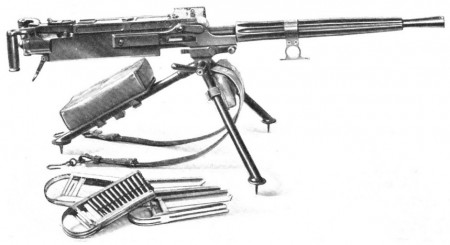
Anyway, a few details on the Model 1924…it used the same type of 20-round charger and fixed magazine as the later Breda 30, although this early design has the magazine on the left side, and it was fed from the right side with those chargers. The Model 30 required the magazine to pivot out from the receiver, and the ammo would be stripped directly into the magazine.
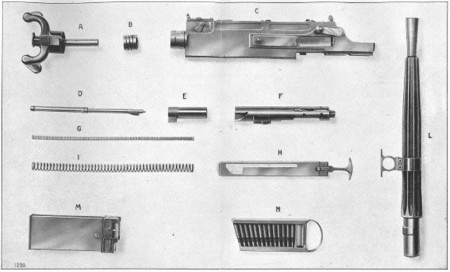
You can download the complete manual (21 pages, and written in Italian) here:
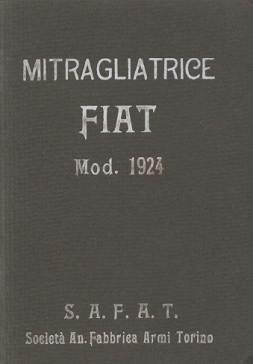

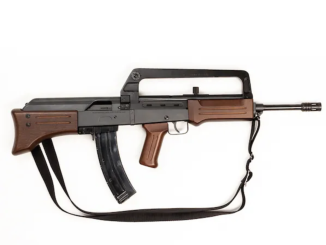
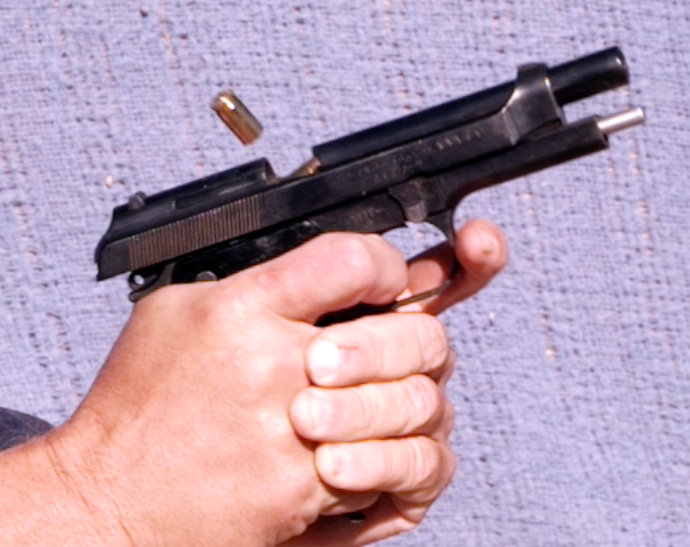
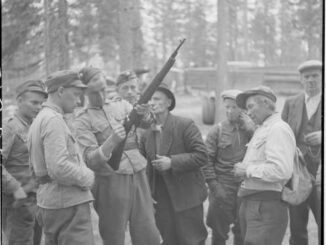
It’s always been amazing to me how well the engineers at Fiat/Breda, Baretta, etc. incorporated stylistic design elements into things that are about the furthest items from requiring them (i.e., military pistols, machine guns, submachine guns). I mean, look at this thing! It’s obvious that the engineers had a visual aesthetic in mind when they made this gun. The same can be said for many other Italian firearms of this vintage. Even the manual uses a very trendy and non-military font. Is it just me, or has anyone else noticed this?
Hey, if you’re going to be hopelessly outclassed, might as well look good doing it!
@ Wes
You are correct about them thinking about it right from the start of the design. Almost anything that an Italian designs will look nice. Look at their machine tools and plastics equipment.
I’ve made prototypes and short runs for Italian engineers. At one time I made plastic items on a contract basis. The 1st question an Italian engineer would ask is what colors I could make it in and then the properties. Everyone else I’d have to ask what color to make it.
The 1st time I was asked about the color I replied with “Why does that matter?”. The guy’s mouth dropped open. I don’t think he could believe that anyone would ask that.
I think the whole world is “form follows function”. With Italians maybe it’s “If the finished product can’t be made to look nice, it’s impossible for it to be made.”
Wow, look at all those chargers in the ammo box! That’s a bunch of spare ammo. I half hoped, given the 1924 date, to find images of Bersaglieri bicycle troops toting the things… If you ever get the chance to check out the 1912 Bianchi folding single-speed bicycle for the Bersaglieri, it is a stunning piece of early-20th century engineering!
Too bad I can’t get that as an option on, say, a little red FIAT 500 bambino! The Mad Max version, I guess…
Here is page with Italian sort of armament destined for planes. There is also FIAT MG 28 which is in 8mm calibre. In many cases Italian MGs were not on par with their opponents, but true enough they project as anything Italian, certain sense of aesthetics.
http://www.ww2aircraft.net/forum/weapons-systems-tech/italian-guns-15397.html
Ian Hogg’s “Machine Guns” does much to trace the trends in Italian MG development between the wars, and also explains quite clearly the Italian system of model designation and nomenclature that often lead to a great deal of duplication with subsequent confusion among researchers. To add fuel to the fire, the SAFAT works changed ownership from FIAT to Breda in the middle of all this, with consequent design and name overlaps. Chapter Five ( “Between The Wars” ) is a must-read, and it also puts Italian MG development in perpective vis-a-vis that of other countries.
Some things I have noticed :
1. The FIAT Modello 1924 shown above has a certain familial resemblance to the FIAT Modello 1926, which was little more than FIAT-REvelli M1914 converted to air cooling and left-side 20-round conventional box feed. If I’m not mistaken, the FIAT M1924 did not see service but did provide the foundations for their improved M1926, which was adopted by the Italian Army in limited numbers as a stop-gap weapon.
2. FIAT later came back with the Modello 1928, which was designed by one Ing. Mascarucci in the SAFAT factory. It was still based on the M1926, but with some improvements in the form of a reshaped locking wedge, removal of the integral receiver oil pump and reservoir, and modifications to the box magazine so that it could use the same quick charger as the Breda Modello 1924.
3. Breda developed their Modello 1924, originally known as the Tipo ( Type ) 5C in ( what else? ) 1924. It was fitted with dual spade grips for use as a flexible aircraft gun, and a wooden stock and bipod for infantry use. using the spade grips in conjunction with the buttstock in the prone position must have been an interesting and somewhat uncomfortable exercise. The 20-round box magazine was permanently fixed to the right side of the receiver and charged from special horseshoe clips or standard rifle clips.Unusually for the time, it also had a quick-change barrel.
4. In 1930, Breda ( now Breda-SAFAT ), introduced the more well-known Modello 1930, which was essentially the Breda M1924 with some improvements optimized for the infantry role, eg., replacement of the spade grips with a more conventional buttstock, pistol grip and trigger assembly.
5. To make things even more interesting, a company named Tempini, of Brescia, came out in 1920 with a much-improved but still-complex spin-off of the Fiat-Revelli M1914 called the Brixia Modello 1920. It was still water-cooled ( like the FIAT-Revelli M1914 ) but had all the recoiling mechanisms fully contained within an enclosed heavy-duty receiver. A complicated rate-of-fire regulator was fitted, and the gun was fed from a box magazine on the lower right side of the receiver ; ejection of spent cartridges was accomplished obliquely from the upper left side. The Brixia M1920 was never adopted and was eventually abandoned in the 1930’s.
6. In the meantime, FIAT was tasked with overhauling the FIAT-Revelli M1914 and putting the “new” gun into production. The result was the Modello 1914/35, which had an air-cooled barrel similar to that of their M1924 and M1926, but chambered for the larger 8mm cartridge. To quote Hogg : “The mousetrap feed system was retained, there was still no primary extraction, and the cartridges still had to be oiled, so that all the disadvantages of the 1914 gun were retained and, indeed, made worse by the adoption of a more powerful cartridge”. In 1938, FIAT attempted to address the primary extraction issue by introducing fluted chambers ( which Agnelli had incorporated into the SIA aircraft gun, but that’s another story ) to new production guns while simultaneously dispensing with the cartridge oilers. Unfortunately, while the concept was correct, the design execution was not properly done and the fluted-chamber guns only worked — ironically — when the cartridges were pre-oiled. FIAT gave up and reverted to unfluted chambers and oilers for the rest of the M1914/35’s production run.
What I have described above only covers a relatively small fraction of Italian MG development between the wars. It does not include the almost equally complicated history of aircraft guns or HMG’s, about which reams more could be put on paper. As exasperating as it sometimes can be in sorting out the various Italian guns and tracing their development, it is this very convoluted and esoteric process that makes them so fascinating both mechanically and historically.
“The FIAT Modello 1924 shown above has a certain familial resemblance to the FIAT Modello 1926, which was little more than FIAT-REvelli M1914 converted to air cooling and left-side 20-round conventional box feed.”
Really not. The Fiat 1924 was an evolution of the SIA 1918 light machinegun that was used in limited quantities in WWI. It’s a blowback design, with a two piece bolt, in which the bolt head is much heavier than the carrier and had to rotate 30° in closing to allow the striker to hit the cartridge, so reducing the required mass of the bolt, providing primary extraction, and avoiding to fire a cartridge if it’s not correctly chambered.
The main problem of the SIA 1918 were its 50 rounds windowed top-mounted magazines (even with today tecnologies they will be considered problems waiting to happen), and they were probably responsible for the preference lately showed by the Italian Army for fixed magazines.
The final evolution of this line was the “Fiat Mod.S”, that’s the same weapon with a lighter frame, wooden buttstock, pistol grip, lighter barrel, fluted chamber to furter aid extraction, and a 25 rounds magazine. All the weapons of this line had a quick-change barrel (a rarity in 1918, even if the tripod of the SIA 1918 was attached to the barrel, so the quick exchange mechanism was of little use in it’s case). The Mod.S was ready too late to compete with the Breda 30 to be adopted by the Italian Army, but was sold in some quantities to the Republican forces in Spain.
http://www.scribd.com/doc/75934367/Fusil-Ametrallador-Fiat-Mod-S#scribd
Hi, Dogwalker :
Thanks for the valuable additional information and comments — I enjoyed reading them and learned a bit more in the process. I looked up the SIA 1918 and found the mounting of the adjustable tripod directly to the finned barrel to be rather interesting, if not a little mystifying as to lack of utility vis-a-vis the QCB feature you had mentioned. The only reasons I can think of for mounting the gun to the tripod in this fashion are :
1. The designers were trying to maintain a satisfactory center of balance when tripod-mounted, and the large, heavy barrel far outweighed the relatively compact receiver
2. Did the SIA use bottom ejection for the expended cartridges? Looking at the receiver and its very low height, I can see that it would have been a challenge to find a mounting point for the tripod cradle, unless mounting brackets were attached or incorporated on the underside of the forward section of the receiver. Bottom ejection would have made this much more difficult.
Any information regarding this subject would be greatly appreciated if you are willing to share it — thanks very much in advance.
Hi!
Firs tof all, forgive me for the fallacy. The Mod.S was obviously sold to the Natioalists, and not the Republicans, during the Spanish War.
As you said the SIA 1918 ejected the cartridges from the bottom, and certainly the necessity to find a point of balance with the long and heavy barrel (way too long. The projected modernization of the weapons still existing in the Italian arsenals in 1938, contemplated the shortening of the barrel from 66 to 50 cm, the replacement of the tripod with a lighter bipod, to provide the weapons of a buttstock, and flute the chambers) have had it’s importance. More than other, for obvious reasons, the weapon was hard pressed to be put in service first than the desigers had the time to iron out all of it’s quirks.
To me, originally the QCB feature of the SIA 1918 was not meant to quick change barrels at all, but to give the crew the possibility of dismantling (and quickly reassembling) the MG in it’s three main components (the barrel, the main body and the tripod) to ease the transport (we have to remember than a good part of the Italian Front in WWI was of high mountain warfare).
As for the evolution of the Italian MGs, as you said, the Fiat 1926 was a modernization of the Fiat 1914, of which retained the short barrel recoil system, with the barrel and the bolt loosely locked by the meant of a wedge, only in a more compact package ( http://i.ebayimg.com/00/s/OTc2WDE2MDA=/z/nW0AAOSw7NNT1j73/$_57.JPG ).
The Fiat 1928, instead, to lock the barrel to the bolt, used a “hook” mechanism ( http://www.crapanzanomilitaria.it/wp-content/uploads/2014/11/dfdfddfdsfgg-002.jpg http://www.ibiblio.org/hyperwar/USN/ref/MG/I/img/MG-1-257-64.jpg ).
The Fiat 1928 hovever failed at winning the competition of the Breda 5C / 5G for the supply of the Italian Army. The Breda was another short barrel recoil design, but with a different locking mechanism, With the barrel and the bolt connected by a clamp that disconnected them sliding laterally during the recoil ( https://www.forgottenweapons.com/wp-content/uploads/2012/09/breda-lockup.jpg https://www.forgottenweapons.com/wp-content/uploads/2012/09/bredalock.jpg ). The 5G would became the Breda 30.
Unfortunately both those design suffered from a very abrupt separation of the bolt from the barrel during the action, lacking primary extraction, and so needed an oiler to lubricate the cartridges.
Having lost the contract, and the subsequent lawsuit, Fiat sold his subsidiary SAFAT to Breda. In 1933 Breda-SAFAT patented it’s aerial MG, obtained coupling the Fiat-SAFAT 1928 “hook” breechblock with a Browning M2 style accelerator. With the accelerator, the oiler was no more needed, and the Breda SAFAT gained the fame to be a very reliable weapon ( http://img856.imageshack.us/img856/8716/rtzvyq.jpg http://img841.imageshack.us/img841/4582/dy6heg.jpg ).
Thanks
For at least 30 years I have had sutch a charge, never knew what it was for.
The italians were always goog at making firearms. when it coms tu using them in combat , thet were not as sussesful.
Somone came up with the ida of a Euro army
The germans shuld be the soldiers, they do what they are told.
Rhe british shuld be the NCOs thet are good at shouting
The french should be the officers, they like nice uniforms
The italians shuld be the orchstra
That is superb description of Euro characters!
It appears Model 24s were used to up-gun Lancia 1ZM armoured cars at one point according to Tank Encyclopdia’s entry on that vehicle